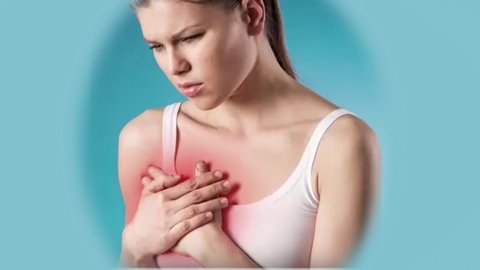Sensations of pain in the mammary glands always cause a certain degree of discomfort, but not all the women associate breast pain with something serious and requiring medical aid.
Generally women complain of breast pains during the pre-menstrual days, mastodynia is often considered a cardinal symptom of pre-menstrual syndrome (PMS). However, mastodynia (mastalgia) may present as independent symptom in adolescent girls or in young women as a type of neurotic reaction. Besides pain sensations, mammary glands get engorged and become extremely sensitive even to a simple touch.
The term describing the pain located in the mammary glands – “mastodynia” – has been first introduced in the year of 1880 by the German surgeon Billroth. Statistic shows that episodes of breast pain (at least once) in the course of a lifetime occurred at least in 70% of the female pollees, of which one out of ten experiencing pain more than 5 days of the month.
Breast pain types are the following:
Cyclic.
- Such pains are associated with the menstrual cycle; they develop in both mammary glands, spreading all over the glands, but the pain being concentrated in the external and upper parts.
- Pain sensations are accompanied by swelling, breast engorgement, causing depressed mood and increased irritability.
- The pain is described as sensation of heaviness, feeling of fullness in the breasts.
- The pain sensations are generally the most intensive during the period of one week before menses.
- Specific for women aged 30 – 40 years old.
Non-cyclic.
- Developing in only one mammary gland and presenting a focus localized in one specific area.
- Less commonly the pain is of diffuse character, in some cases the pain area may include even the axillary zones.
- Pain type– burning pain.
- Specific for women older than 40 years old.
Not related to the mammary glands (for example, myalgias, the source of which is falsely assumed the breast tissues).
Mastalgia causes
- Hormonal theory
Cyclic breast pains are usually a consequence of hormonal status disorders within the female organism and in most cases the pain resolves when pregnancy or climax occurs.
Non-cyclic pains are generally caused by not hormonal but anatomical deviations within the mammary glands – previous traumas, breast surgeries, cyst formation. Besides, non-cyclic breast pains may be caused by the functional or structural disorders in the muscles or bones, in the nervous system, in the joints or in the chest wall.
2. Theory fatty acids imbalance in mammary tissues.
The sensitivity of breast cells is directly related to the fatty acids balance, which is why pain sensations in many cases may resolve after an oral intake of evening primrose oil that contains large quantities of gamma-linolenic acid.
- Medication theory
A direct effect on the woman’s well-being has been demonstrated for specific medications containing estrogens and progesterone (contraceptive agents, infertility medications of hormonal origin, less common – antidepressants) – in many cases such medication (as an adverse effect) induce cyclic pains in mammary glands. This may explain breast pain sensations in women entering the menopause but continuing to take hormonal medications.
Diagnostics of Mastalgia (mastodynia)
Self-examination of mammary glands in cases of developing such symptoms is not enough so it is necessary to visit a specialist that is expected to ask you about the following:
- Duration of breast pains
- Pain severity
- Pain location
- Other signs of discomfort (nipple discharge, indurations)
- Past medical history
- If you had any mammography sessions (yes/no) and when (if yes).
After gathering the required oral information an examination is to be carried out, including direct palpation (manual examination) of the mammary glands and axillary lymphatic nodes. If necessary, mammography can be prescribed (X-ray examination). In case of detecting suspicious formations ultrasound examination is then prescribed.


 Русский
Русский 

